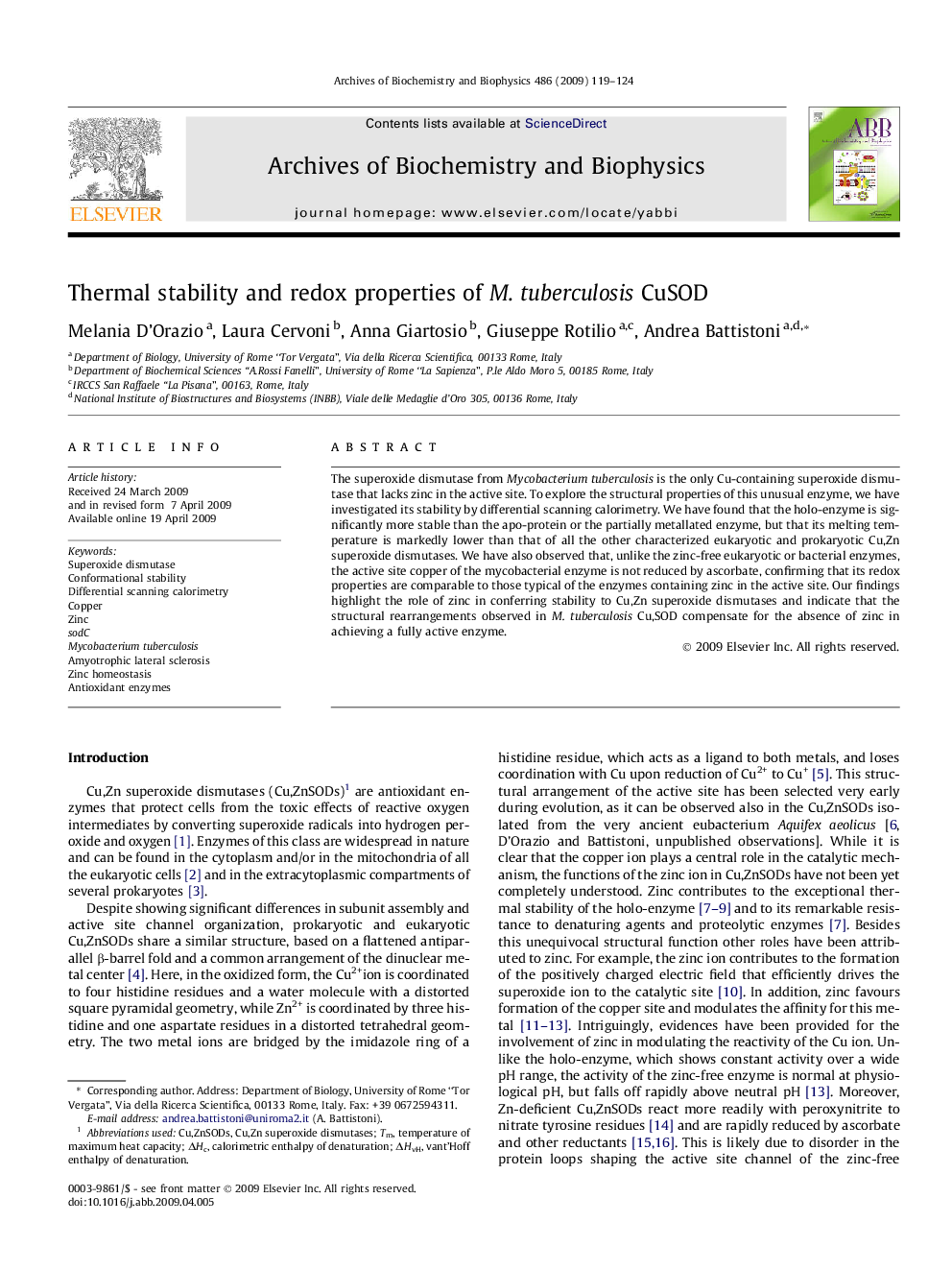| Article ID | Journal | Published Year | Pages | File Type |
|---|---|---|---|---|
| 1926352 | Archives of Biochemistry and Biophysics | 2009 | 6 Pages |
Abstract
The superoxide dismutase from Mycobacterium tuberculosis is the only Cu-containing superoxide dismutase that lacks zinc in the active site. To explore the structural properties of this unusual enzyme, we have investigated its stability by differential scanning calorimetry. We have found that the holo-enzyme is significantly more stable than the apo-protein or the partially metallated enzyme, but that its melting temperature is markedly lower than that of all the other characterized eukaryotic and prokaryotic Cu,Zn superoxide dismutases. We have also observed that, unlike the zinc-free eukaryotic or bacterial enzymes, the active site copper of the mycobacterial enzyme is not reduced by ascorbate, confirming that its redox properties are comparable to those typical of the enzymes containing zinc in the active site. Our findings highlight the role of zinc in conferring stability to Cu,Zn superoxide dismutases and indicate that the structural rearrangements observed in M. tuberculosis Cu,SOD compensate for the absence of zinc in achieving a fully active enzyme.
Keywords
Related Topics
Life Sciences
Biochemistry, Genetics and Molecular Biology
Biochemistry
Authors
Melania D'Orazio, Laura Cervoni, Anna Giartosio, Giuseppe Rotilio, Andrea Battistoni,
